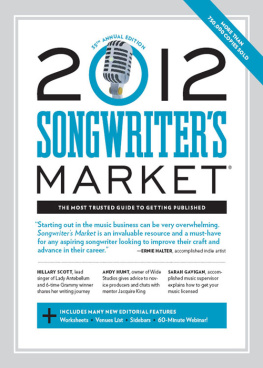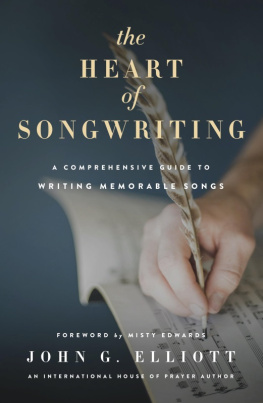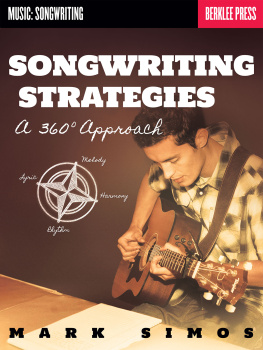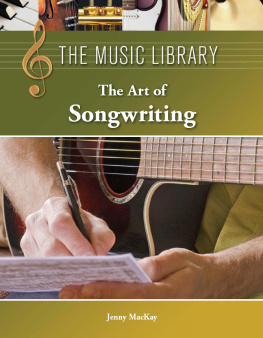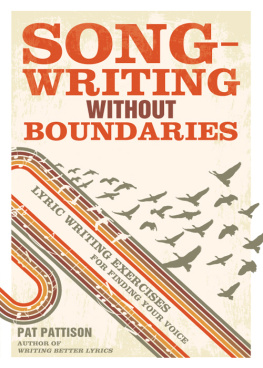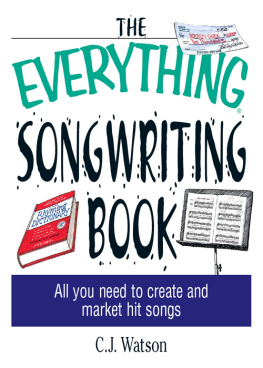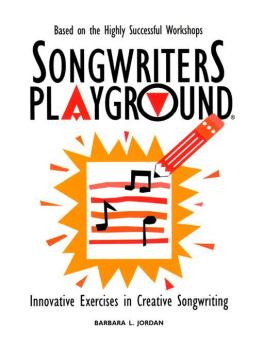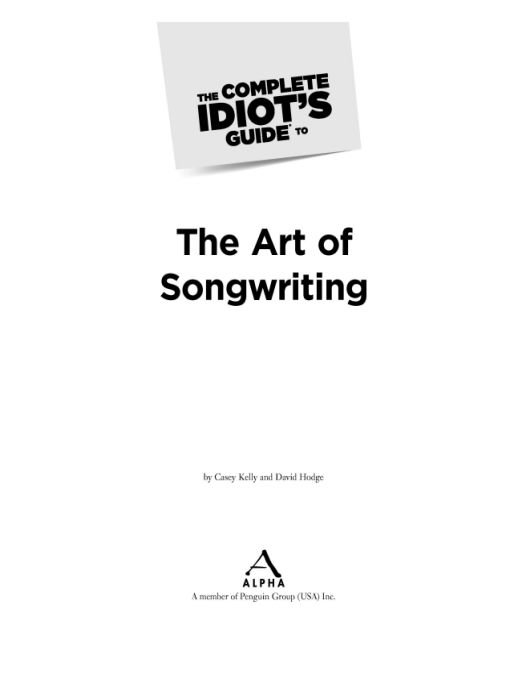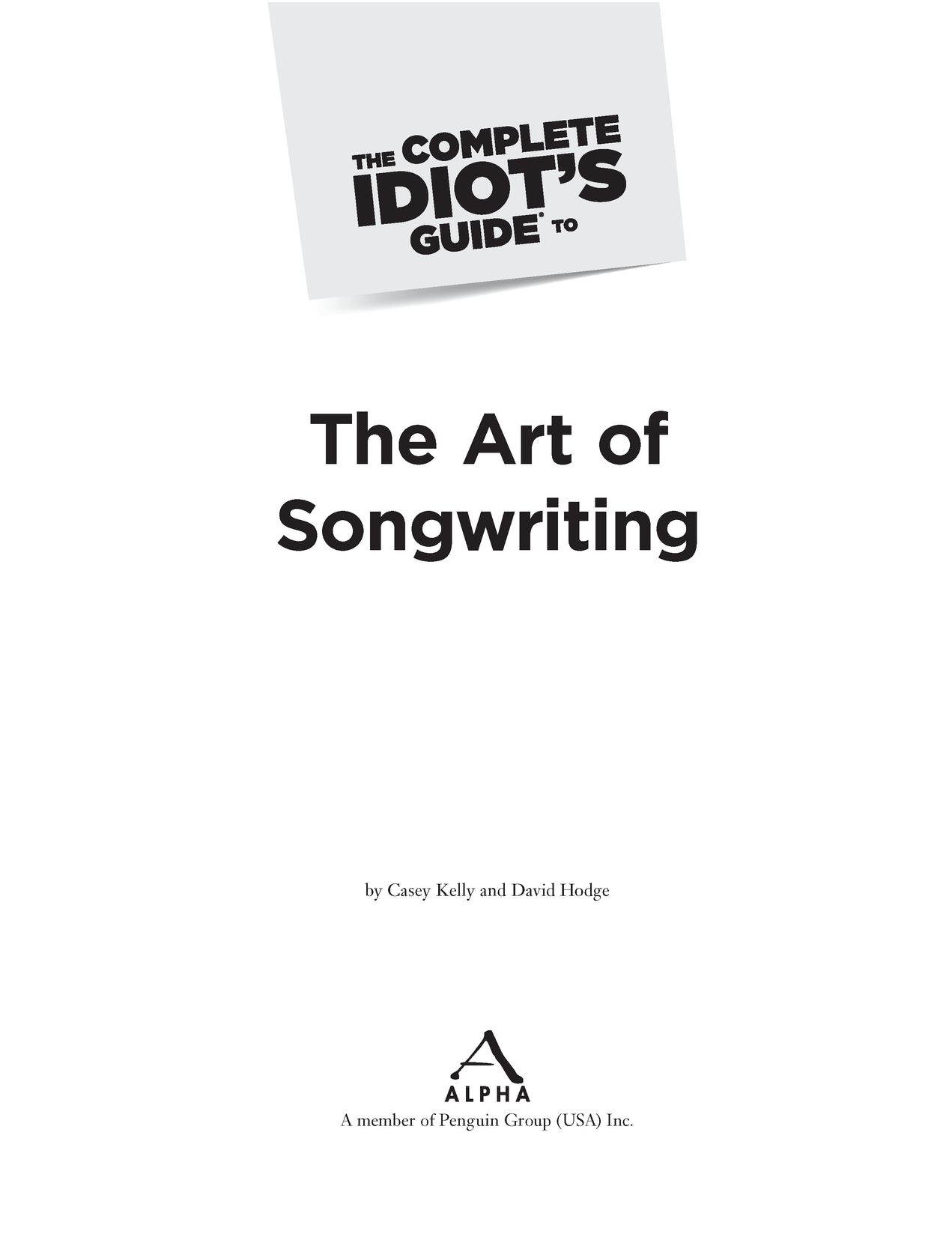Table of Contents
This book is dedicated to my good friend
Todd David Cerney,
writer of some of the
funniest, saddest, hardest-rocking and
most beautiful songs
ever.
Casey Kelly
Introduction
Songs fill our world. Most often they float by without us giving them a second thought, lifting our moods, playing as a backdrop to our daily lives, and helping fill otherwise empty spaces of time when were driving our cars, riding the elevator, or waiting on hold on the telephone. Even the songs we recognize and enjoy hearing go by without many listeners realizing that someone spent a lot of time composing the melodies and crafting the lyrics.
If songwritings in your blood, however, the fact that someone wrote the song youre listening to is probably the first thing you think about. You notice the way the words go together, the way the story unfolds, the unusual rhymes and rhyme schemes, the chord changes, the unique musical touches, the overall sound, and many other things that other listeners take for granted.
Have you ever heard a song that was a big hit performed live by the songwriter who wrote it and experienced the obvious intimacy between the writer and the song, each word dripping with the truth of its intended meaning? It can be palpable. You feel it and perhaps its moved you to want to make a statement that moves listeners the way that moment moved you.
You want to be a songwriter!
The Complete Idiots Guide to the Art of Songwriting is a step-by-step guide designed to get you started writing your songs. Even if youve never written one before in your life, you should be able to follow along step by step and create a good song.
While trying to include everything you need to know, weve given the most weight to the aspects, concepts, and practices of songwriting that are, in our experience, the least understood and the hardest to discover on your own.
How This Book Is Organized
The Complete Idiots Guide to the Art of Songwriting is set out in twenty-four chapters, which are arranged in five general parts. They are:
Part 1, Getting Yourself Ready, prepares you for your lifelong songwriting adventure. You will learn about the basic structures of songs, some helpful history, and observations about the many different musical genres songs can fall into. Youll also get help finding the inspiration to write terrific songs.
Part 2, Painting with Words, focuses on crafting great lyrics that are the heart and soul of most songs. You will learn how to turn your ideas into memorable lyrics that grab and hold your listeners attention, and youll discover the importance of making strong first impressions with your songs title and opening lines. Youll also read about how to make great choruses, verses, and bridges as well as get good tips on making sure youre getting the most songlike lyrics you can.
Part 3, Making Music, covers the music side of songs. Beginning with an incredibly easy introduction to the basics of music (notes and chords), you then get lessons in the three main musical components of songs: melody, harmony, and rhythm. Not only will you get a good overview of each component, but youll also get to work on putting all the pieces together to make your songs sound great.
Part 4, Getting Better All the Time, helps you do just that by introducing you to the importance of rewriting and all the work you can do to improve your songs after youve written them. You also explore ways to constantly refresh and improve your songwriting abilities, both lyrically and musically; for example, youll look at how co-writing and collaborating on music can help you improve as a songwriter. A discussion on making demos of your songs and a quick look at how songwriters use the Internet concludes this part.
Part 5, Going Pro, offers you invaluable knowledge if you should decide to try your hand at selling your songs in the musical marketplace. Youll learn how the music business works and how your songs earn money. Youll also get vital information on copyrights and some tips on the businesspeople whose experience youre likely to need.
At the end of the book, you will find two helpful appendixes: a glossary of various terms used throughout this book; and a list of books and other tutorial material, as well as online organizations and other songwriting communities where you will be able to meet with fellow writers.
Special Features
Youll also find even more advice and useful information in the numerous sidebars found throughout The Complete Idiots Guide to the Art of Songwriting. There are four types of sidebars that appear in this book:
DEFINITION
These provide explanations and details of various musical and song-related terms.
TUNE TIPS
These offer you pointed/aimed pieces of advice or lore on various relevant topics, from finding inspiration to saving your song ideas to crafting great lyrics and music and more.
WRITERS TALK
These are tips, guidance, and insight from some well-respected and successful songwriters in their own words.
SONG STORIES
These let you in on some interesting information about how specific songs were written.
In Part 3 of this book, you will find web icons that indicate that the example in question is available as an MP3 sound file on the Book Extras page at Alpha Books website, which you can find here:
www.idiotsguides.com/artofsongwriting
If you right-click on any file and then select save target as, you can download the audio file directly to your computer for later use. We hope that these music examples of chords, melodies, chord progressions, and ways of putting them together will be of help to you.
Acknowledgments
Books, like a lot of songs, are the result of collaboration. Both Casey and David want to thank their agent, Marilyn Allen, as well as all the staff of Alpha Books for making this book become a reality. Very special thanks especially go to Alphas editors Tom Stevens and Phil Kitchel (whos also a great songwriter, by the way!) for all the time and energy, not to mention enthusiasm and patience, that they contributed to this project. And thanks to all the rest of the team at Alpha, including Marie Butler-Knight, Mike Sanders, Billy Fields, Janette Lynn, Andy Saff, William Thomas, Rebecca Batchelor, Julie Bess, Brian Massey, and Laura Caddell, we also express our gratitude.


